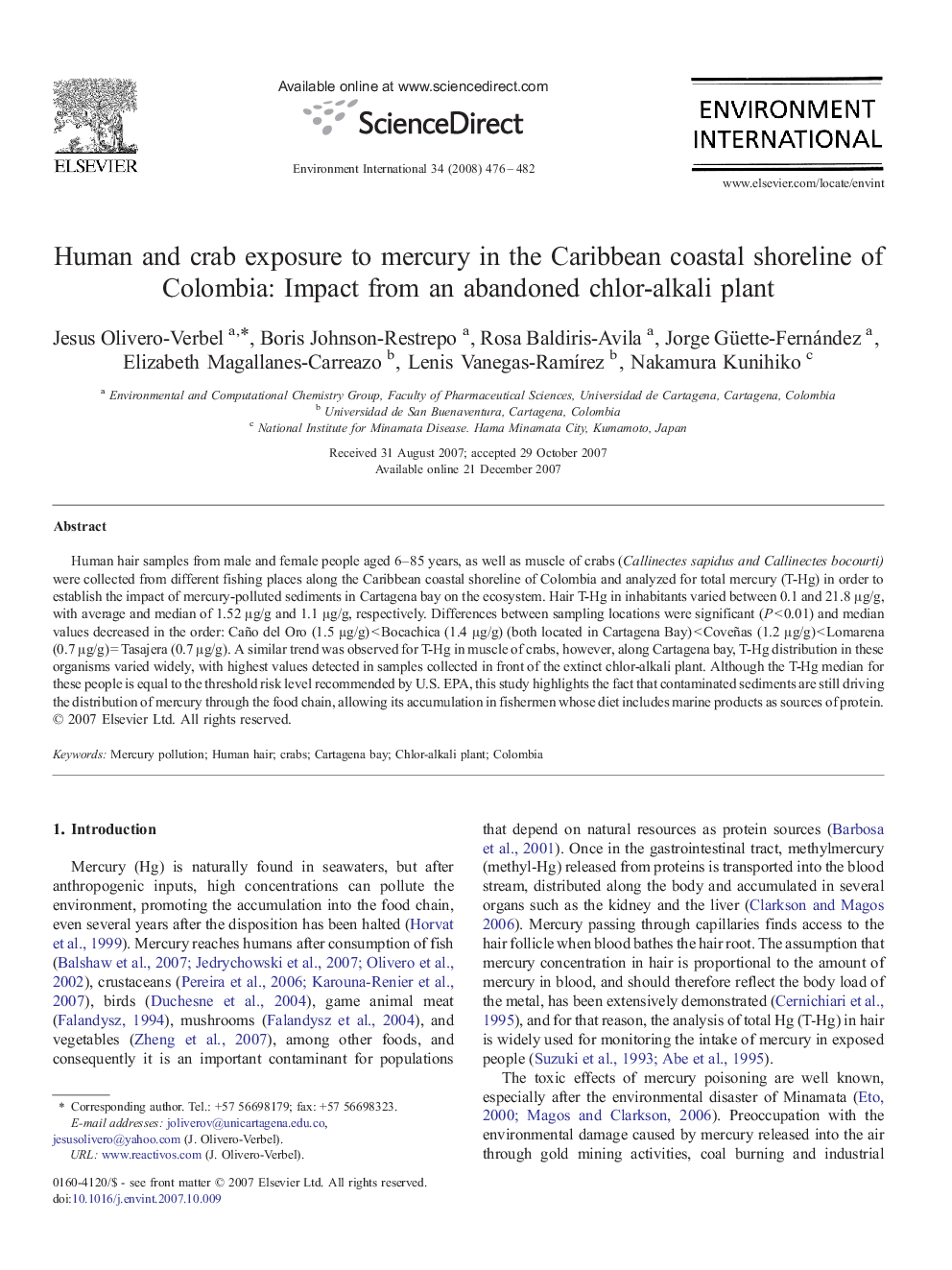| Article ID | Journal | Published Year | Pages | File Type |
|---|---|---|---|---|
| 4424006 | Environment International | 2008 | 7 Pages |
Human hair samples from male and female people aged 6–85 years, as well as muscle of crabs (Callinectes sapidus and Callinectes bocourti) were collected from different fishing places along the Caribbean coastal shoreline of Colombia and analyzed for total mercury (T-Hg) in order to establish the impact of mercury-polluted sediments in Cartagena bay on the ecosystem. Hair T-Hg in inhabitants varied between 0.1 and 21.8 μg/g, with average and median of 1.52 μg/g and 1.1 μg/g, respectively. Differences between sampling locations were significant (P < 0.01) and median values decreased in the order: Caño del Oro (1.5 µg/g) < Bocachica (1.4 μg/g) (both located in Cartagena Bay) < Coveñas (1.2 μg/g) < Lomarena (0.7 μg/g) = Tasajera (0.7 μg/g). A similar trend was observed for T-Hg in muscle of crabs, however, along Cartagena bay, T-Hg distribution in these organisms varied widely, with highest values detected in samples collected in front of the extinct chlor-alkali plant. Although the T-Hg median for these people is equal to the threshold risk level recommended by U.S. EPA, this study highlights the fact that contaminated sediments are still driving the distribution of mercury through the food chain, allowing its accumulation in fishermen whose diet includes marine products as sources of protein.
